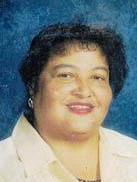Quentin R. Johnson: Let’s talk about the Arts
Published 12:30 pm Friday, April 19, 2024
|
Getting your Trinity Audio player ready...
|
The acronym STEM is often discussed among educators. It stands for Science, Technology, Engineering, and Math. The U.S. Department of Education promotes challenging curricula in these areas so students will be able to understand complex challenges, be trained for high-tech jobs, and be prepared to make evidence-based decisions. Additionally, surveys often list STEM-related careers among the highest paying and most in-demand positions available.
Yet for all the value STEM-focused fields bring, many people feel something is missing: the letter “A” for Arts. They encourage STEM, noting its association with power. They observe that steam offers the ability to move things. They suggest that studying the arts can lead to real, lasting change.
Even Albert Einstein recognized the value of the arts. Reports quote him as saying, “I am enough of an artist to draw freely upon my imagination. Imagination is more important than knowledge. Knowledge is limited. Imagination encircles the world.”
Einstein, who ushered in a new era in physics and won the Nobel Prize in 1921, fully understood the importance of knowledge, but he wasn’t content to rest among a collection of static facts. He brought his fertile imagination to bear on what he had learned, and that allowed him to take a step beyond to see what no one else had envisioned.
A couple years ago, the American Academy of Arts and Sciences released a report, “Art for Life’s Sake,” that discussed the many ways the arts contribute to society. It stated, “The arts give us opportunities to contemplate meaning and engage in personal reflection and provide comfort in times of crisis. The arts can challenge our perspectives, giving us new ways to see and experience the world, cultivating the values of diversity, tolerance, and empathy. The arts impart valuable cognitive, critical thinking, and technical skills used by artists and non-artists in their livelihoods, strengthening our economy.”
With this in mind, the Virginia Community College System (VCCS) launched a series of poetry and art contests to inspire students’ creative endeavors. The announced theme, “I Belong,” encouraged participants to explore the various ways they engage with their schools and communities.
SVCC held its first Poetry and Art Contest on March 13th at the Estes Community Center in Chase City. Dr. Daryl Minus, Vice President of Enrollment Management and Student Success, said, “This was an awesome opportunity for the college to magnify the impact and value of the arts and simultaneously engage our students under a universal theme that underscores belonging and inclusion.”
Vondrenna Smithers, Student Experience Coordinator, noted that the contest provided “a great opportunity for our students to embrace their passions for the arts and let their talents shine. We were thrilled to provide our students with this meaningful avenue to express their creativity and also eager to see our talented representatives compete in the VCCS-level contest.”
At SVCC, Harper Balance took top honors in the visual art category. Her work was displayed for a state-wide audience at a VCCS event where she won the “People’s Choice” award. Rayna Aranzamendez placed first in the poetry category. She also shared her work in a live performance with other winners across the VCCS.
In addition, support from Virginia Humanities will enable the publication of a book featuring the poetry and art work of winners from all participating colleges.
Dr. Quentin R. Johnson is president of Southside Virginia Community College. He can be reached via email at quentin.johnson@southside.edu.




